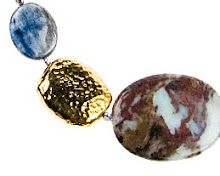In the modern world, glass has an interesting multiple personality, and is well known and used in almost all spheres of life, from art and architecture to optics and laboratory research. Naturally occurring in a pale green-blue, glassmakers manufacture colored glass by introducing mineral oxides and metallic compounds to the chemical makeup.
In the ancient world, the Phoenicians were the earliest to make use of found glass, and their discovery of it has been dated as far back as 5000 BC. The Egyptians would be the first real pioneers in glass manufacturing and by 1500 BC had developed a method of shaping it known as 'core forming'. Compressed sand would be dipped into molten glass, rolled to coat the surface, and removed. The object would then be shaped while still hot, and when sufficiently cooled the sand would be drained. For all our drinking bottles and other glass containers in widespread use today, we have the Ancient Egyptians to thank! From core-formed glass, Egyptians went further in 500 BC to invent 'cast' glass, which is the process of pouring molten glass into a shaping receptacle that would not adhere to the glass' surface.
Glass blowing would later be developed in the Mediterranean at the turn of the millennium, and in the Byzantium kingdom they would achieve the means to enamel, stain, and gild glass, thus exponentially expanding the medium's creative possibilities. The Roman Empire would be the first civilization to cultivate glass working for architectural purposes (windows), and through their extensive network of trade routes facilitated the transportation of glass and glass making techniques throughout Eurasia and North Africa. This, in turn, set in motion an explosion of glass enthusiasts and artisans.
With the Industrial Revolution of the 19th century, mechanized glass manufacture was introduced, establishing the means of large-scale commercial glass production that have, since then, only been refined. To summarize the long history of one of mankind's most cherished materials, it can be said that modern day glass working can be traced back to a rich and illustrious lineage of innovative artisans. While improvements and innovations still continue to grow the glass industry, the methods of shaping, colouring, and treating glass have remained fundamentally the same. Nevertheless, the fresh minds of the design world will continue to use glass and galss beads in remarkably innovative ways, and the cutting edge of modern technology will inevitably produce new breakthroughs in the science of glass, contributing further to its wonderfully rich and time-honoured tradition.
Click here to browse Glass at Stones and Findings

No comments:
Post a Comment